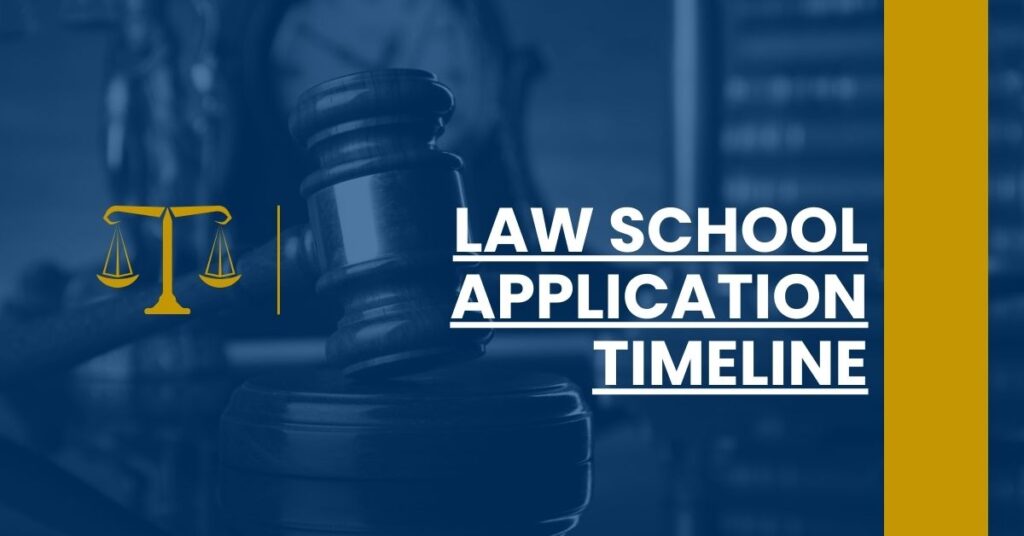Mastering the Law school application timeline is crucial for your admission success.
- Optimal Timing: Ensures you submit applications when they have the greatest chance of acceptance.
- Key Components: Outlines the documents and tests required throughout the application process.
- Strategic Decisions: Helps you make informed choices on early decisions and deadlines.
Leverage the Law school application timeline for a smoother journey to acceptance.
- Understanding the Law School Application Cycle
- Preparing Your Application Components
- The Role of the LSAT in Planning Your Timeline
- Crafting a Personal Statement and Resume
- Securing Letters of Recommendation
- Last-Minute Checks and Application Review
- After Submission: Interviews, Waitlists, and Follow-Ups
- Assessing and Choosing the Right Offer
- Conclusion: Starting Your Law School Journey on the Right Foot
Understanding the Law School Application Cycle
Law school applicants often find themselves mystified by the admissions process—a labyrinth that beckons with jurisprudential promise. To navigate this journey, understanding the traditional law school application timeline is your cornerstone. This timeline is not just a checklist; it’s a strategic game plan that aligns your ambitions with the institutional rigor of law schools.
When Does the Law School Application Cycle Start and End?
The cycle typically begins in September of the year before you wish to start school and runs until late spring, although exact dates can vary by institution. In essence, when the leaves start to turn, your application journey should be well underway.
What Are the Different Admission Periods?
- Early Decision: This binding option necessitates that your complete application be submitted typically by November. It’s a true testament to your commitment to a single law school. But careful—this early pledge means you agree to attend if accepted.
- Regular Decision: Think of this as your standard option. Deadlines hover around February or March, giving you more time to polish your application to a high shine.
- Rolling Admissions: The wheel that turns admissions decisions over time. Applying early is wise as seats in the class fill up with each passing decision wave.
Why Does Timing Matter?
Adroit timing can be the difference between acceptance and denial. Law schools often assess applications as they are received—thus, the early bird stands a better chance of catching the eye of admissions officers. Yet, ensure that haste doesn’t compromise the quality of your application.
Maintain vigilance in your pre-law schedule to ensure that your LSAT preparation, personal statement drafting, and recommendation letter gathering all adhere to an efficient and effective timeline.
Preparing Your Application Components
Like a seasoned artisan, carefully sculpt the individual elements of your application—each component contributing to a compelling whole. Your application is more than forms; it is a narrative of your academic and personal journey.
The Role of LSAT Scores
- Test Schedules: Standardized tests are no mere formality. The LSAT is typically offered nine times a year, and you’d be wise to take it at least six months before your applications are due. This allows time for a possible retake, should you wish to improve your score.
- Score Impact: Your LSAT score carries significant weight—it’s a numerical measure of potential law school success. Therefore, schedule your LSAT at a time that affords you ample preparation, this is a lynchpin in your application assembly.
Personal Statement Craftsmanship
Forethought and introspection are your guides here. Craft a narrative that reflects your motivations, experiences, and aspirations. Be genuine and find your unique voice to stand out in a sea of applicants.
Gathering Transcripts & Letters of Recommendation
- Official Transcripts: Request these early to avoid any delays. They provide a quantitative measure of your scholastic diligence.
- Recommendation Letters: Select recommenders who know your work ethic and character well. Approach them months in advance, affording them time to write detailed endorsements of your candidacy.
The Role of the LSAT in Planning Your Timeline
The LSAT is not just a test—it’s the drumbeat to which the law school application timeline marches. Its score influences not only your acceptance but also scholarship opportunities and, potentially, your legal career trajectory.
Scheduling Your LSAT
- Select a Test Date: Opt for an LSAT date that permits a stress-free preparation period—six to nine months prior to application deadlines is prudent.
- Preparation is Key: Dedicate yourself to an LSAT prep course or self-study schedule. Mastery of the LSAT is a marathon, not a sprint, requiring consistent and diligent study.
- Plan for the Unexpected: Life can offer detours—build allowance into your timeline for possible illness, retakes, or personal events that may impact your initial test date selection.
It’s an irrefutable fact: your LSAT score is pivotal. A strategic approach to when you take the test can slot the rest of your law school application components into a seamless timeline. Remember, in your pursuit of a legal education, foresight is your faithful companion.
Crafting a Personal Statement and Resume
Navigating the law school application timeline involves more than tracking dates—it means presenting yourself in prose and on paper to reflect a candidate of potential and dedication. Crafting a persuasive personal statement and a precise resume are the very threads that might weave your narrative for the admissions committee.
The Art of Personal Statement Writing
Developing a Theme: The personal statement is your podium—a chance for the spotlight to reveal your story. Consider the thematic elements that have shaped your journey. Is it resilience, a passion for advocacy, or a transformative experience? Establish a strong narrative thread that can weave through your statement.
- Show, Don’t Tell: Illuminate your points with vivid anecdotes or tangible experiences. Show the reader who you are through actions and consequences rather than merely stating attributes.
- Revising and Refining: Once your first draft is complete, the dig-in begins. Carve away superflity and embrace clarity. This process may involve multiple drafts, but it’s the meticulous sculpting that unveils the masterpiece beneath.
Aligning With Your Legal Aspirations: The personal statement is not written in a vacuum; it should resonate with your legal ambitions. Whether you’re inspired by environmental law, human rights, corporate governance, or another field, subtly communicate your directed interests and tie your aspirations to the law school’s strengths.
Seeking Feedback: Before you consider your statement final, solicit feedback. Fresh perspectives can identify gaps in narrative or logic, helping you refine your statement to near perfection.
Honing Your Law School Resume
Tailoring the Content: Your resume should be more than a compilation of achievements; it should tell the admissions committee why your experiences render you an ideal candidate for their law school.
- Prioritizing Relevance: Place the most pertinent information at the forefront. This may include internships, academic achievements, or leadership roles that align with the ethos of the practice of law.
- Maintaining Professionalism: Keep your layout sleek and your content free from colloquialism. Remember, your resume is a professional document—one that speaks to your readiness for the rigors of law school.
Highlighting Transferable Skills: What have your past experiences taught you that can be applied to a legal education? Critical thinking, research, teamwork—the competencies of a lawyer begin in the seeds of past endeavors.
Substance and Specificity: Rather than listing responsibilities, highlight achievements; let the admissions officers gauge your potential impact through measured success in your past roles.
Securing Letters of Recommendation
Take a strategic step in your law school application timeline by carefully selecting and approaching individuals for letters of recommendation. These letters serve as professional endorsements, nudging the scales in your favor.
Choosing Your Recommenders
- Academic Advocates: Seek out professors who can attest to your intellectual prowess and academic contributions. Ideally, they should reflect on specific attributes or accomplishments relevant to your law school pursuits.
- Professional Champions: Consider supervisors or colleagues who can vouch for your professional aptitude, ethical standards, and adaptability—qualities pertinent to succeeding in law school and beyond.
Requesting Recommendations
Provide Context: When asking for a recommendation, give your recommenders an understanding of what you’re aspiring to and why their endorsement matters. Furnish them with your resume, personal statement, and other relevant information to guide their testimonials.
Timing Is Everything: Approach your potential recommenders well in advance—at least two to three months before your first application deadline. This courtesy not only respects their time but also ensures you’re not rushing them, which could reflect in the quality of their letters.
Gratitude and Follow-Up: A thank you goes a long way. Express your appreciation for your recommenders’ time and contribution. Gentle follow-ups can ensure they remember your deadlines without feeling pestered.
Last-Minute Checks and Application Review
In the final sprint of the law school application timeline, thoroughness is your ally. A meticulous review of your application can unearth overlooked errors or opportunities to add polish.
- Accuracy and Consistency: Ensure all information is correct and consistent across your application components. Mismatched details can confuse admissions committees or suggest carelessness.
- Proofreading: A grammatical error or a typo can mar an otherwise stellar application. Use proofreading tools, and do not underestimate the value of a second set of eyes.
Privacy and Sensitivity: When filling out applications, you may be required to disclose personal information or compose answers to sensitive questions. Always handle this with the gravitas it deserves, ensuring the confidentiality of your application materials.
After Submission: Interviews, Waitlists, and Follow-Ups
Once your applications are submitted, the law school application timeline enters a quieter, yet still crucial, phase.
If You’re Called for an Interview
- Research and Prepare: Anticipate the types of questions you might be asked and cultivate thoughtful, informed responses.
- Practice Makes Poised: Mock interviews can refine your delivery and help mitigate interview jitters.
Handling Waitlists Strategically: If placed on a waitlist, demonstrate continued interest in the school and provide updates on any significant academic or professional advancements.
Assessing and Choosing the Right Offer
Facing multiple acceptances can be both thrilling and daunting. Assess each offer by considering factors such as the school’s reputation, culture, location, alumni network, and employment outcomes post-graduation.
Factor in Financials: Examine the value proposition of each offer, weighing tuition costs against scholarship offers and factoring in living expenses.
Alumni and Current Students: Don’t hesitate to reach out to alumni or current students for their candid insights into life at the law school. It may just tip the scales.
Conclusion: Starting Your Law School Journey on the Right Foot
As you carve out your path on the law school application timeline, the wisdom you’ve gathered will guide your efforts. Begin with the end in mind—each step on this timeline directed towards the goal of transforming into an adept and insightful advocate of the law. By planning effectively and adhering to key deadlines while also crafting compelling narratives, you are not just applying to law school; you are laying the foundation for a promising legal career.

